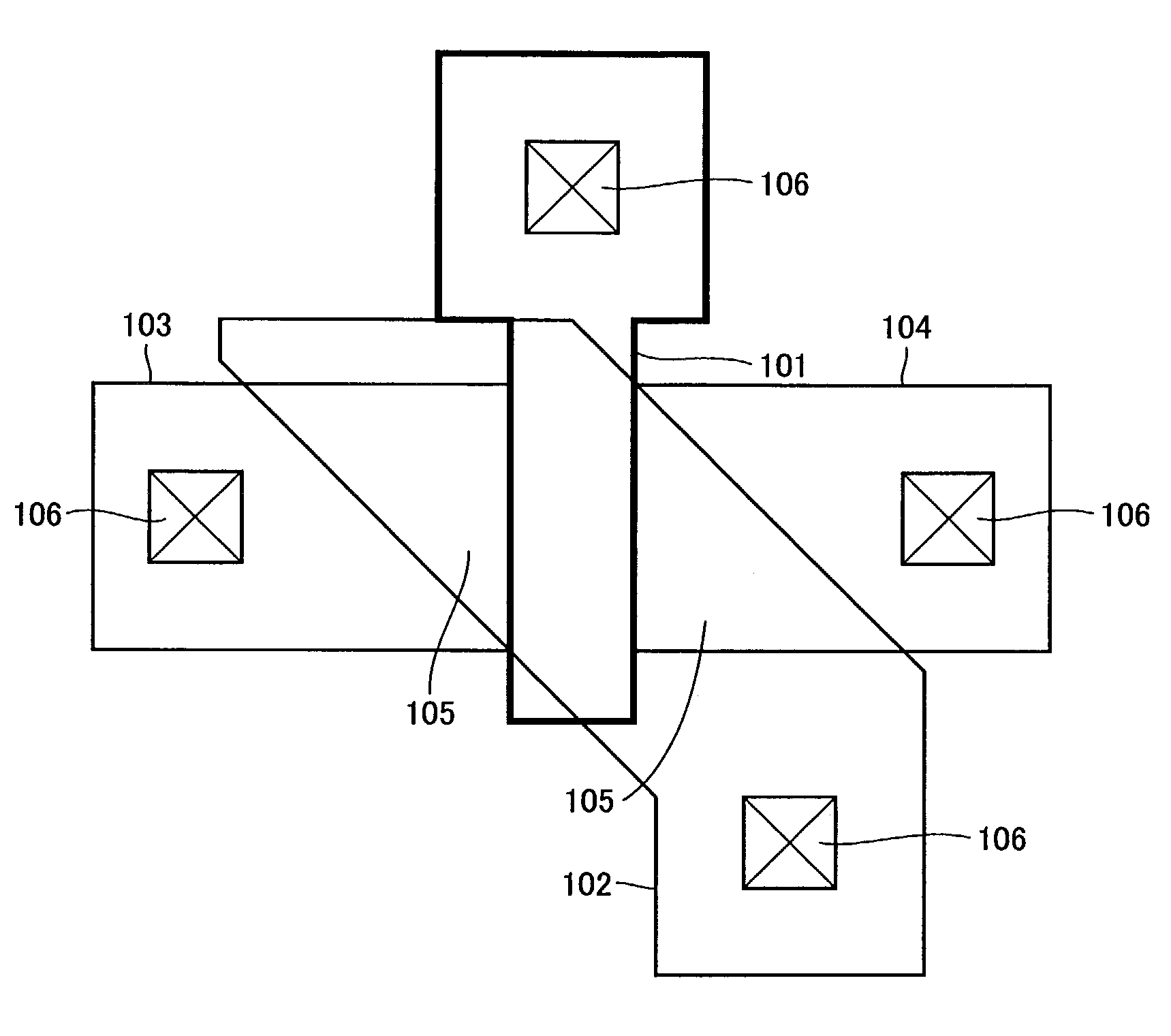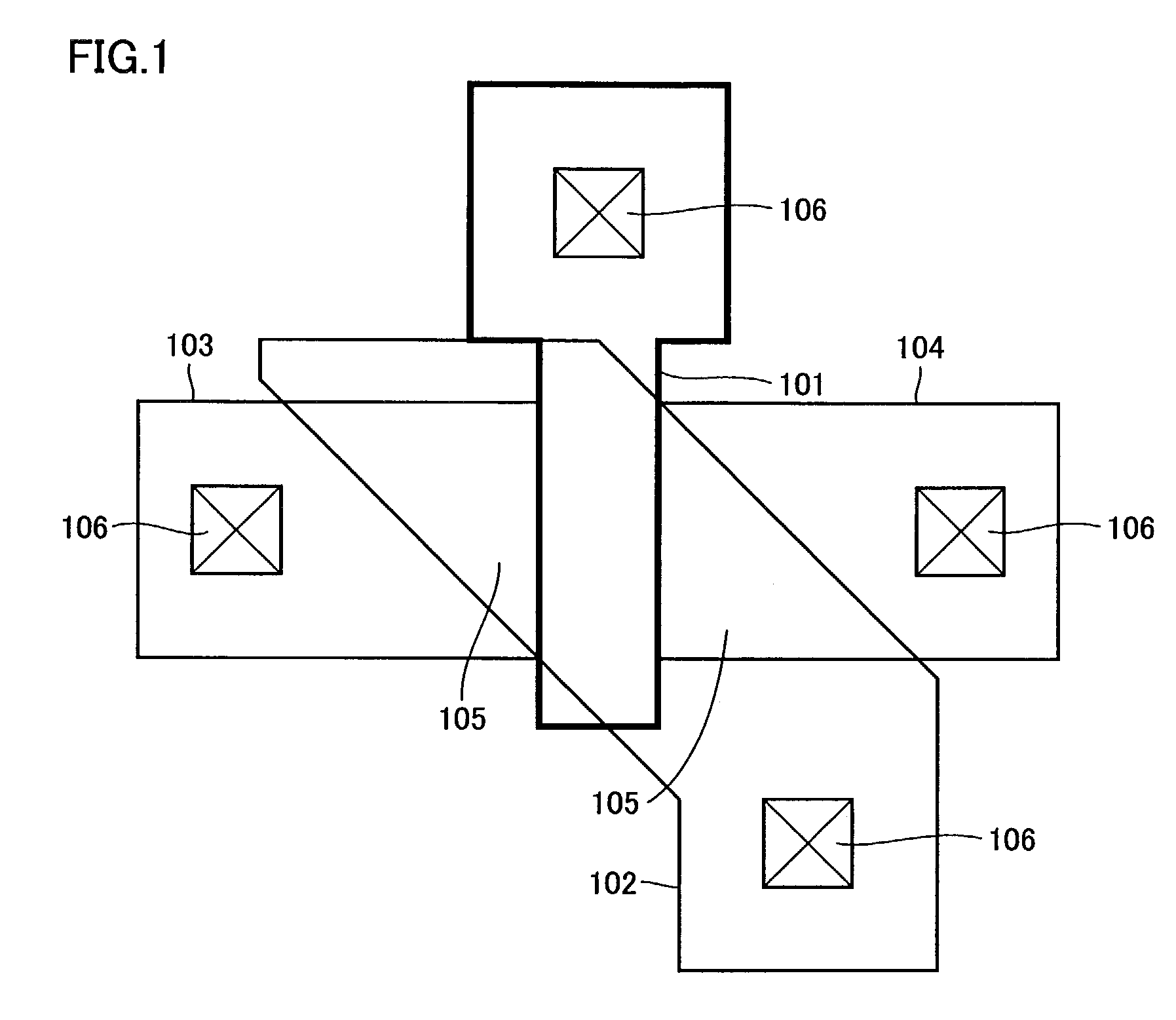Semiconductor device
a technology of semiconductors and devices, applied in the direction of logic circuits, pulse techniques, radio frequency controlled devices, etc., can solve the problems of difficult to produce integrated circuit devices stable and uniform in quality, ensuring an operating margin for covering a process variation unavoidable in the lsi, and not readily implemented with conventional technology, etc., to achieve the effect of improving performance and ensuring stability
- Summary
- Abstract
- Description
- Claims
- Application Information
AI Technical Summary
Benefits of technology
Problems solved by technology
Method used
Image
Examples
first embodiment
[0035]Device Structure
[0036]Initially in order to clarify a feature of a basic structure of the semiconductor device in a first embodiment FIG. 1 shows an exemplary configuration in layout regarding basic components of the device. In the first embodiment the semiconductor device is structurally characterized by additional introduction of a control gate having a fixed angle relative to a typical MOS gate.
[0037]FIG. 1 shows a typical MOS gate 101, a control gate 102, a source region 103, a drain region 104, a control channel region 105, and a contact region 106 electrically connected to a metal wire to extract an electrode.
[0038]In the first embodiment the semiconductor device is characterized in that control channel region 105 underlying control gate 102 substantially forms a triangle between typical MOS gate 101 and source 103 / drain 104, and control channel region 105 underlying control gate 102 and a channel region underlying MOS gate 101 together form a channel region substantiall...
second embodiment
[0052]FIG. 8 shows a configuration of the semiconductor device of the present invention in a second embodiment. The second embodiment differs from the first embodiment in the geometry of control channel 105 underlying control gate 102. In this example, each control channel 105 is formed substantially in a trapezoid. Nonetheless, similar device characteristics can be achieved if each control channel 105 and the channel region underlying MOS gate 101 together form a channel region substantially in a parallelogram. Note, however, that the expressions (1)–(3) for approximation need to be modified slightly, as represented in expressions (4) and (5):
W′=cos θ*(W−(L+a+b)*tan θ) (4)
L′=cos θ*(L+a+b+W*tan θ) (5)
and β′ is in proportion to the following expression:
β′∝(W / L−(1+a / L+b / L)*tan θ) / (1+a / L+b / L+W / L*tan θ) (6)
wherein a and b are each a length of a rectangular portion in each control channel of FIG. 8 that extends in the direction of the channel. The present embodiment indicates that a c...
third embodiment
[0053]FIG. 9 shows a configuration of the semiconductor device of the present invention in a third embodiment. The third embodiment is different from the first embodiment in that control gate 102 is formed by the same layer that forms MOS gate 101. If control gate 102 and MOS gate 101 are formed by a single gate layer the gates are electrically separated. Accordingly the gates are not allowed to overlap and, as shown in FIG. 9, they need to have a gap between control gate 102 and MOS gate 101 (so that they can be separated and processed).
[0054]Even in that case, the gap between control gate 102 and MOS gate 101 is provided in the same step that forms the source and drain, and the resistance is significantly small in value and this device configuration also exhibits characteristics which electrically do not differ from the first embodiment. Gain coefficient β modulated is approximated, as represented by expressions (4)–(6), wherein a and b represent a gap between control gate 102 and...
PUM
 Login to View More
Login to View More Abstract
Description
Claims
Application Information
 Login to View More
Login to View More - R&D
- Intellectual Property
- Life Sciences
- Materials
- Tech Scout
- Unparalleled Data Quality
- Higher Quality Content
- 60% Fewer Hallucinations
Browse by: Latest US Patents, China's latest patents, Technical Efficacy Thesaurus, Application Domain, Technology Topic, Popular Technical Reports.
© 2025 PatSnap. All rights reserved.Legal|Privacy policy|Modern Slavery Act Transparency Statement|Sitemap|About US| Contact US: help@patsnap.com



